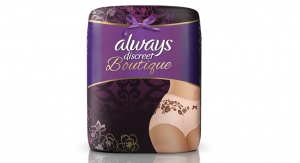YOU SEARCHED BY...
SEARCH BY...
PRODUCT TYPE (BY BRAND OWNER)
- Adult Diapers(35)
- Alternative Feminine Hygiene Products(8)
- Baby Diapers(49)
- Bladder Leakage Protection(25)
- Bladder Shields(20)
- Disposable Underwear(24)
- Incontinence Pads/Liners(38)
- Male Incontinence Items(16)
- Menstrual Cups(4)
- Newborn Diapers(44)
- Pant Style Diapers(33)
- Panty Liners(43)
- Sanitary Pads(45)
- Sleep Pants(27)
- Swim Diapers(23)
- Tampons(20)
- Training Pants(30)
PRODUCT TYPE (BY BRAND OWNER)
Company Headquarters
2F.-3, No.130, Sec. 2, Zhongxiao E. Rd.
Taipei, Default 10053
Taiwan
Company Description
Our company was the first to introduce adult diapers to the Taiwanese market in 1986. As the population structure ages with each passing day, welfare of elders is gaining more attention. Senior apartments and care facilities in the elder industry are seeing rapid development, and products for elders are also becoming a focus of attention for manufacturers. As chronic disease is increasing amongst the elderly population, the population of those who suffer from incontinence is also increasing. According to statistics from the Department of Health, 55% of elders above the age of 65 suffer from chronic diseases. 10% of them are unable to care for themselves and require long term care services. As patients are becoming more accepting of diapers, statistical data from the Taiwan Paper Industry Association (see chart below) indicates that sales volume in the adult diaper market increased by approximately 2 times from 2001 to 2007. In addition, according to the Ministry of Interior’s statistics, the population of elders above the age of 65 has increased from 1.973 million people in 2001 to 2.343 million in 2007. The trend of rapid aging amongst Taiwan’s population is apparent, which is why there is still room for considerable growth in this market.
In terms of care pads, they are used in combination with diapers or diaper pads and laid down on mattresses or chairs so that there is more complete protection against incontinence. Not only can elders use them, women can also use them after giving birth. This is why their market demand is also considerable in scale, as it increases with the demand of diapers.
Diapers are a product that each newborn baby must use. As Taiwan’s birthrate is declining with each year, the ROC’s monthly statistical report pointed out that there are still roughly 200,000 babies born each year, so market demand is still fairly stable. As baby diapers are a mature product, there are a variety of brands in the market and competition is fierce as there is little product differentiation. Each company stresses product advantages such as being ultrathin, breathable, wetness indicators, strong absorption, and easily mobility.
Product packaging for baby wet nap products have progressed from cans to foil packages or environmentally friendly refill packs. Material-wise, a transition has also been made from nonwoven fabric to environmentally friendly materials such as wood pulp and ultra soft nonwoven fabric. The market still has potential for future development, as this use this product has expanded from baby care to general use and use by caretakers.
PRODUCT TYPE (BY BRAND OWNER)
Related Content
-
Diaper, Baby | South Africa

Baby Diapers in Nigeria
Competitors are fighting to be part of the action.Danielle le Clus-Rossouw, Senior Analyst, Euromonitor Cape Town, South Africa 01.05.18
-
Adult Incontinence | Diaper, Baby | Feminine Hygiene | India
-

2017: The Year That Was
Innovation, expansion, investment continue to be the key themes in nonwovens.Karen McIntyre, Editor 12.07.17
-
Diaper, Baby | Green/Sustainability | Western Europe
Diaper Recycling Efforts Underway in Wales County
278 tons of diaper waste diverted in past six months12.07.17
-
Hanwei Customizes Differentiated Machines
Company manufactures equipment for the hygiene market11.01.17
-

